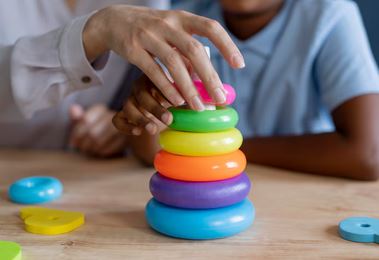Blog

- Details
- By stark
- Category: Demo
Robotics education is rapidly gaining traction as a vital tool for developing STEM skills. But beyond programming and engineering, robotics nurtures essential social and emotional competencies such as teamwork, patience, and perseverance.
When young students engage in robotics activities, they learn to collaborate, communicate, and creatively solve problems. These projects naturally involve trial and error, helping learners develop resilience and a growth mindset — critical elements of well-being.
Hands-on robotics also encourages curiosity and engagement by connecting abstract STEM concepts with tangible outcomes. Watching a robot respond to commands provides immediate feedback and a sense of accomplishment.
Moreover, robotics projects often require cooperation, boosting social skills and empathy. Students learn to listen, share ideas, and support peers, fostering a positive learning community.
Introducing robotics early lays a foundation not only for future career readiness but also for well-rounded personal development.
Further reading:
- Benefits of Robotics Education for Kids (STEM Education Guide)
https://stemeducationguide.com/benefits-of-robotics-education-for-kids/ - Social-Emotional Learning through Robotics (Edutopia)
https://www.edutopia.org/article/using-robotics-support-social-emotional-learning

- Details
- By stark
- Category: Demo
Benjamin Bloom’s taxonomy is a widely used framework that categorizes learning objectives into cognitive levels — from remembering facts to creating new ideas. While it provides a roadmap for developing academic skills, Bloom’s model also supports student well-being by encouraging teachers to foster mastery and confidence rather than mere memorization.
By designing lessons that move learners progressively through understanding, applying, analyzing, evaluating, and creating, educators build deeper engagement and a sense of accomplishment. This approach can reduce anxiety often associated with testing and rote learning.
Incorporating social and emotional learning alongside Bloom’s taxonomy further enhances well-being. For example, group projects foster communication and empathy, while reflection activities build self-awareness and resilience.
Modern instructional design blends Bloom’s taxonomy with formative assessments and feedback cycles, allowing learners to experience success and growth incrementally. When students perceive that their efforts lead to real progress, motivation and self-esteem rise.
Resources:
- Bloom’s Taxonomy Overview (The Glossary of Education Reform)
https://www.edglossary.org/blooms-taxonomy/ - Integrating SEL with Bloom’s Taxonomy (Edutopia)
https://www.edutopia.org/article/integrating-social-emotional-learning-blooms-taxonomy

- Details
- By stark
- Category: Demo
1. EXPOSURE: Students become aware of the existence of knowledge. Situated Cognition Framework provides a context-based scenario for them to observe real-world applications of knowledge. This looks like: demonstration, explanation, vocabulary, scenario. Example: students watch a video or a live demonstration of a SME building and programming a robot.
2. OPPORTUNITY: Students have a chance to try the application of the knowledge and to learn more about it. This looks like: students apply knowledge and technology to a problem, gain feedback and experience. Example: students attempt to build and program a robot with supervision and suggestions.
3. ENGAGEMENT: Students actively participate in the application of knowledge. This looks like: student projects, internship, employment. Example: students participate in a robotics tournament where they are responsible for their performance in a competitive team environment.

- Details
- By stark
- Category: Demo
Jean Piaget’s theory of cognitive development remains a cornerstone for understanding how children learn and grow. His identification of developmental stages — sensorimotor, preoperational, concrete operational, and formal operational — helps educators recognize that children think differently at different ages.
This understanding is critical for designing learning experiences that are not only cognitively appropriate but also emotionally supportive. For example, younger children in the preoperational stage benefit from concrete, hands-on activities, which foster engagement and reduce frustration. Older learners can handle more abstract reasoning and problem-solving tasks.
Piaget emphasized that children actively construct knowledge through interaction with their environment. This constructivist perspective encourages educators to create rich, exploratory learning environments where students can test ideas and learn from mistakes. Such environments build confidence and a love of learning — crucial components of student well-being.
Modern classrooms that incorporate project-based and experiential learning echo Piaget’s principles. When lessons align with developmental readiness and include opportunities for collaboration and reflection, learners are more likely to succeed academically and feel emotionally supported.
Further reading:
- Piaget’s Theory of Cognitive Development (Simply Psychology)
https://www.simplypsychology.org/piaget.html - Constructivism in Education (Edutopia)
https://www.edutopia.org/constructivism